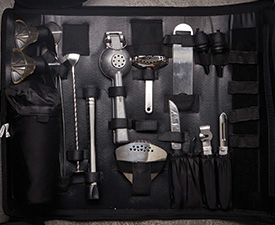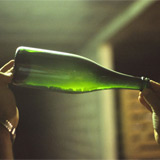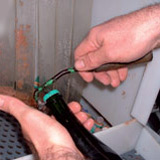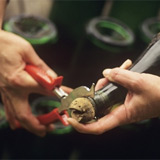Disgorgement is the process of removing the yeast sediment resulting from the secondary fermentation in the bottle of Champagne and other quality sparkling wines.
So how does this process occur? - Once the bottle has been inverted (after riddling), the next process is called disgorgement, disgorging (or 'degorgement' in French), the removal of lees (dead yeast cells) now collected in the neck of the bottle. The neck containing the sediment is snap frozen by immersing it in a solution of freezing brine at around -20 to -30C (or liquid nitrogen).
Once this has occurred, the bottle is carefully moved to an upward angle of approximately 45 degrees, (at this point, the bottle will be closed with a bottle cap in most cases, some producers may still use a cork and clip closure) - carefully opened and the ice plug of frozen wine (containing the deposit) is ejected by the carbon dioxide gas pressure in the bottle, leaving behind clear Champagne.
As the wine is now very cold, there is minimum gas pressure lost from solution during this process. The bottle is then topped up with the same wine and normally sweetened with liqueur d'expedition to give it the desired balance and finished style. Even wines designated as "Brut" are sweetened and contain 5-12 grams/litre of residual sugar.
The bottle then has the cork inserted and the wire (muselet) is applied. The sparkling wine then can rest for a period of time, and then dressed for the market and eventual enjoyment.
Until this process was invented Champagne was cloudy, a style still seen occasionally today under the label 'methode ancestrale'. The removal process was a skilled manual process; modern disgorgement is automated but still care and attention is required to ensure a clear, quality product.











